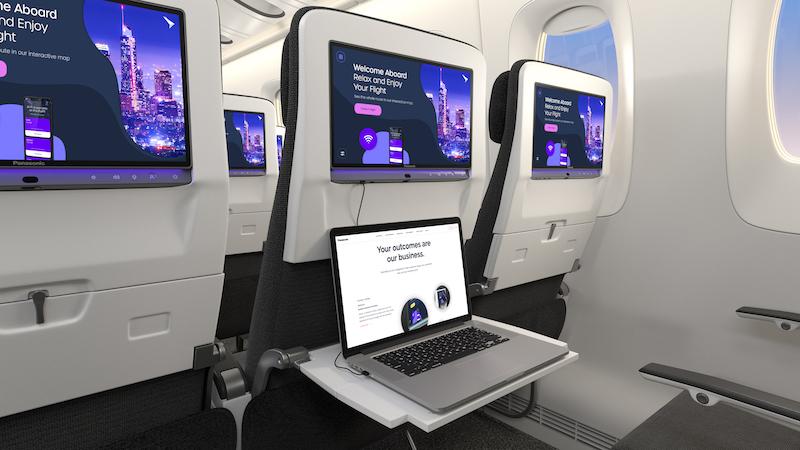
United is buying Panasonic Avionics' Astrova product.
HAMBURG—United Airlines plans to install nearly 300,000 seatback inflight entertainment (IFE) screens from Panasonic Avionics.
The screens will be fitted on the carrier’s new Airbus A321XLRs and Boeing 787s from 2025, said Mark Muren, United’s managing director of identity, product and loyalty, as the 2023 Aircraft Interiors Expo (AIX) got underway in Hamburg on June 6.
United will be the North American launch customer for Astrova. No costs of the contract are being released at present.
The new A321XLRs and 787s—Muren declined to say which models of the Boeing twin-aisle would be involved—form part of the airline’s international fleet, but the close-to-300,000 screens, which cover United’s June 6 order and an earlier commitment, will also be installed on the carrier’s domestic fleet as part of the United Next program to refurbish domestic cabins. Panasonic Avionics said it is the largest ever investment in its IFE product by any airline.
“Ten years ago, United thought that it was all going to be about [using] your own device,” Muren said. “We were right, but we can delight and engage [passengers] if we also put a great screen right in front of them. They want to use their own device, but also to be engaged and entertained.” A few years ago, he added, no United domestic aircraft had seat-back screens, but in a few years, they will all have them.
Muren said the airline’s engineering teams will benefit from the screen’s modularity and light weight, which will allow for easier retrofits and save on weight.
Panasonic launched the Astrova at AIX in 2022, with a choice of 13-in. or 16-in. screens. For 2023, the company announced a lineup of five new screen sizes.

The 19-in. screen will be used in “dense” business-class and lie-flat seats on new narrowbodies. The 22-in. option will go into “standard” business-class cabins, while the 27-in. offering will be used to satisfy the “front-row trend” in airlines, where carriers are using the extra space at the front of business-class cabins to offer passengers slightly larger seat suites and edge them closer to the former first-class cabin experience.
“We’re talking to a couple of seat manufacturers [about this],” Panasonic Avionics VP for product management Andy Masson told Aviation Daily. “You could see Airbus A350s and Boeing 777Xs using these as standard in business class.”
The remaining two monitor sizes are 32 in., for use in front-row business-class or in first-class cabins, and 42 in., for use in first class. Panasonic has already sold every one of the new screen sizes to airliner OEMs, he added.
Masson said the new screens will be the first to have HDR10+ certification, which gives a screen the ability to stream 4K content from the big studios. Masson said some of those studios are now insisting that airlines should have HDR10+ before they will release 4K material to them.





